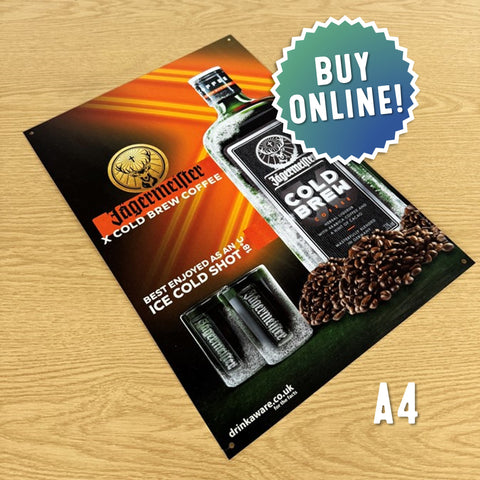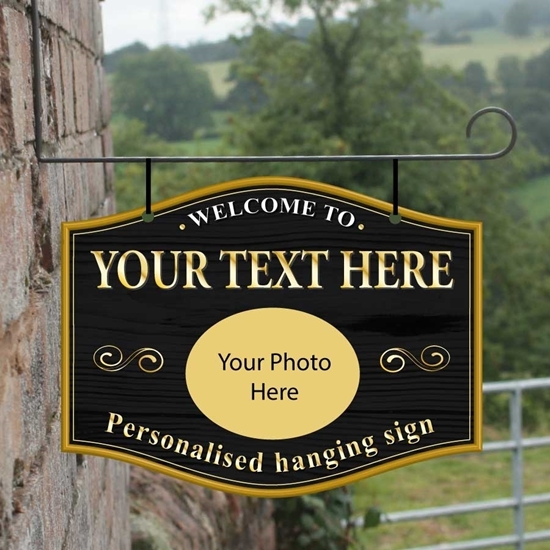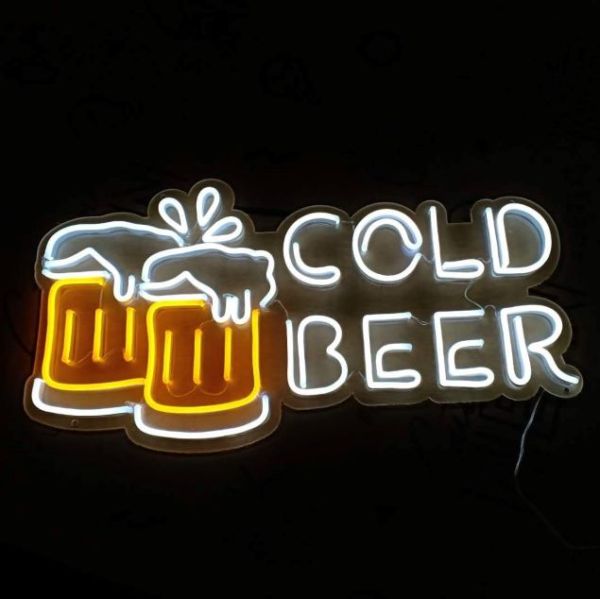Best Reasons On Choosing Bar Signs
Best Reasons On Choosing Bar Signs
Blog Article
How Do Bar Signs Differ In Regards To Their Intended What They Are Used For?
The purposes of bar signs can be very different. There are some significant differences between bar sign. Branding
The purpose of this logo is To help strengthen and grow the bar's brand.
The bar's logo is often featured or name, along with the their signature colors. It's designed to be an imposing feature that is representative of the overall theme and vibe of the establishment.
Examples: Neon signs with the bar's logo, custom metal signs with the bar's name.
2. Informational
The aim of this document is to offer vital details for customers.
Features Text that is simple to read and provides important information, such as the operating hours, Wi Fi passwords, rules for the house, or a restroom location.
Examples: Wall-mounted signs near the entrance with times of operation, signs pointing to restrooms.
3. The Decorative
The goal is to improve the appearance and atmosphere of the bar.
Highlights: The decor of the bar is usually more artistic or themed. Text or specific information may not be included.
Examples include beer advertisements from the past or signs, which are humorous, funny or themed.
4. Promotional Items
It is the purpose of promoting specific products such as services, events, or products.
Features Eye-catching designs and highlight specials, upcoming events or new menu items. Certain elements could be temporarily or modifyable.
Examples: chalkboards that list daily specials; banners that promote special deals during happy hour or posters for an upcoming event.
5. Directional
Use to direct patrons to the right bar.
Features: Clear arrows for customers to follow, e.g. finding restrooms, exits and other areas of the bar.
Examples: Signs that point to bathrooms, "Exit" signs, directions arrows to different seating areas.
6. Regulatory/Compliance
Goal : To make sure that safety is in compliance with legal standards.
Highlights: Signs required to comply with legal requirements such as smoking areas, occupancy limits or emergency exits.
Examplesinclude "No Smoking" signs and occupancy limit signs, emergency exit signs.
7. Interactive
Purpose to engage with customers and create engaging experiences
Features: Elements that encourage patron involvement, such a write-on surfaces or interactive digital elements.
Examples: Chalkboards with messages to customers, signs with QR codes that link to digital menus or social media.
8. Thematic
Goal: To create a certain atmosphere or theme.
Features: Signs aligned with the theme of the bar, adding to the overall ambience.
Examples: Pirate-themed signs in a nautical bar; rustic wooden signs for an establishment themed on the country.
9. Menu
Purpose: To display the bar's menu items.
Features: Lists beverages and foods clearly, typically with prices. The list can be changed or static.
Digital screens, for example, that rotate menus as well as wall-mounted menus for drinks.
Each type of bar sign has a distinct purpose and is designed accordingly to fulfill its specific role in the bar. When they understand these distinctions, bar owners can choose and position signs efficiently to improve the experience of patrons and meet operational needs. Check out the top personalised bar signs info for more tips including cocktail bar sign, garden bar sign personalised, the staying inn sign, hanging pub signs, hanging home bar signs, hanging pub signs for sale, bar signs, personalised signs for home bar, garden bar signs, personalised cocktail bar sign and more.
How Do Bar Sign Customisation And Personalisation Differ?
Bar signs can be found in a range of styles and customizable options that reflect the unique brand, design and ambience of every business. What are the differentiators in bar signs in regards to personalization and customization? Material
Customizable Materials : Wood metals and acrylic neon LED, chalkboard, and vinyl
Personalize: Choose materials that match the theme and aesthetic of the bar, like wooden furniture in a comfortable bar, or contemporary acrylic in a club.
2. Design
Custom Graphics Illustrations, logos, typography, and artwork.
Personalization: Use brand-related elements or unique imagery to represent the bar's personality and the atmosphere.
3. Shape and size
We can customize sizes from small tabletop signs up to huge outdoor signs.
Personalization: Adjust the size and shape to fit specific areas, and meet specifications for branding. For instance, large lettering could be used as an eye-catching statement piece. Compact signs are perfect for small spaces.
4. Color
Custom Color Schemes Custom Color Schemes Pantone options that match, RGB options and custom colors and finishes.
Personalization - Select colors that go with the brand's image, the interior design of the bar and preferences of the patrons it is targeting. These could be vibrant and bold or subtle and sophisticated.
5. Lighting
Custom Lighting Effects Neon LED, backlit edge-lit projection, or any other.
Personalization: Choose lighting that can enhance the mood, ambience and visibility while enhancing the theme of the bar. For instance, you can choose neon or LED lighting for contemporary design.
6. Text Messaging
Custom Text: Bar name, slogans, quotes, menu items, event announcements.
Personalization - Develop a message that is well-received by patrons. It must reflect the personality of the bar and clearly explain any offers, promotions or beliefs.
7. Interactivity
Custom Interactive Features Digital displays, QR codes or interactive projections.
Personalization: Create unforgettable experiences by using interactive elements like digital menu boards or games with interactive elements.
8. Mounting and Installation
Custom Mounting Solutions - Hanging or wall-mounted, freestanding or window-mounted.
Personalization Options: Select mounting options that match the design of the bars to maximize visibility and blend seamlessly into the overall scheme.
9. Event-specific and seasonal
Custom Themes: Christmas decor theme, seasonal themes or themed events.
Personalization: Refresh signage regularly to reflect seasonal shifts. celebrate holidays or promote events, creating a dynamic, engaging environment for your customers.
10. Brand Consistency
Custom Branding Element: Logos. Fonts. Colors. Images.
Personalization: Consistency is key for all signage and branding materials. This helps to strengthen the brand's image, improve brand recognition and provide an unmatched visual experience for customers.
Benefits to Customization and Individualization
Brand Differentiation - Stand out from the crowd and create a lasting impression.
Brand Identity Reaffirm your brand's image to build customers to be loyal.
Atmosphere improvement: Adjust the signage to your bar's mood and ambience improving the customer experience.
Engagement: Signage that is personalized can create excitement and stimulate patrons to interact.
By using personalization and customization options, bar-owners can create distinctive and effective signs that do not only communicate information effectively, but also contribute to aesthetics, atmosphere and the image of their establishment. Take a look at the best pub signs for website tips including hanging pub signs for sale, hanging bar sign, garden pub signs, pub signs made, garden bar signs, the staying inn sign, signs for garden bar, home garden bar signs, pub signs personalised, pub signs and more.
What Is The Difference Between Bar Signs In Regulations As Well As Other Bar Signs?
Signs for bars are subject to a variety of regulations imposed by local, state, and federal authorities to ensure public safety as well as aesthetic standards and adherence to the zoning laws. The regulations for bar signs differ. Dimensions and placement regulations
Zoning laws: These rules define the dimensions the distance, height and width of signs from property lines or adjacent buildings.
Historic Districts: Signs may be restricted to preserve the historic character of specific districts. This could include limitations regarding size, design, and materials.
2. Illumination Restrictions
Light Pollution: To try to reduce light pollution, it's possible to control the brightness, color, and the time of illuminated signs.
Safety: Signs must not produce glare or a distracting light that could pose dangers to drivers and pedestrians. This is particularly true near to roads.
3. Content Signage
Alcohol Advertising: Alcohol advertising is banned in certain states. This is a concern for images or content that could appeal to minors, or promote excessive drinking.
Health Warnings - Laws could require the prominent display of health warnings and warnings about alcohol consumption or smoking.
4. Historic Preservation Regulations
Signs in historical districts have to be in line with the style of architecture or character of the district. This requires the approval of preservation boards.
Material and Design: Signs that are historically significant may have restrictions regarding the materials used or the style and color scheme.
5. Sign Permitting Process
Permit requirements: Before putting up or changing the signs, bar owners are required to get permits. This might require submitting plans, paying fees and getting approval from the local authorities.
Code Compliance - Signs must meet requirements for building codes, regulations regarding safety in the event of fire, as well as standards for accessibility to make sure that accessibility and safety are assured for people with disabilities.
6. Repair and removal of signs
Maintenance requirements. It is up to the owner of the bar to ensure that signs are kept in good condition, structurally sound with no hazards, and conforming to regulations.
Signs abandoned: There may be laws that regulate the removal or destruction of abandoned or decaying signs to protect the aesthetic value of the area and prevent blight.
7. Digital Signage Regulations
Content Restrictions: Laws may regulate the content that is displayed on digital signage, prohibiting certain types of content, such as flashing lights, or graphic images that offend.
Limitations on Operational Signs: To minimize visual clutter, regulations may restrict the brightness of digital signs, their movement or frequency of change.
8. Enforcement and Penalties
Inspections Local authorities conduct routine inspections to verify compliance with signage regulations by imposing citations on those who violate.
Penalties: In the event of non-compliance penalties can include fines or citations. They can also include the removal of signs, or to modify them or even legal actions.
9. Procedure for Signing Variance
Bar Owners Can Apply for Variances: Bar owners are able to apply for variances to differ from the sign regulations that are standard. They must demonstrate they have a legitimate reason for the deviation and mitigate any negative impacts on aesthetics, safety, or security.
Public Input: Some variances could require public hearings, or input from community members neighbors, property owners who own adjacent properties, or business associations.
10. Community Input & Engagement
Public Consultation - Some communities include community members as part of the development and the implementation of signage regulations through conducting public consultations or surveys.
Community Benefits: Sign regulations could include provisions to promote local businesses or revitalize the neighborhood.
By knowing and observing the regulations for signage Bar owners can be sure that their signs enhance the aesthetic appeal of their establishment. contribute positively to the surrounding community, and abide by legal requirements, while reducing the risk of fines or penalties, as well as legal battles. Check out the recommended bar sign outdoor for site advice including personalised beer sign, pub wall sign, personalised pub, bespoke bar signs, personalised sign for bar, to the pub sign, hanging pub signs personalised, personalised garden pub sign, bar signs for garden, make a bar sign and more.